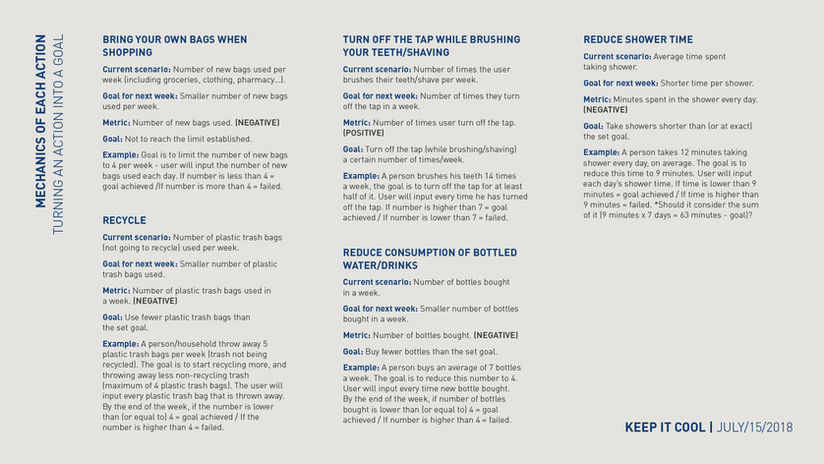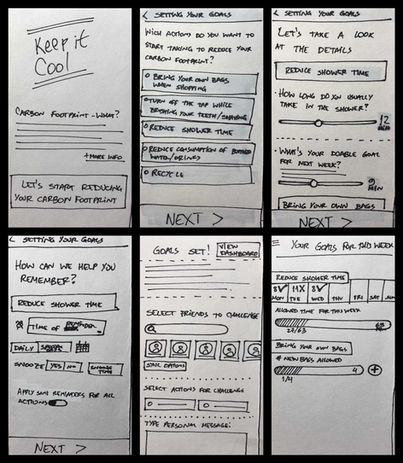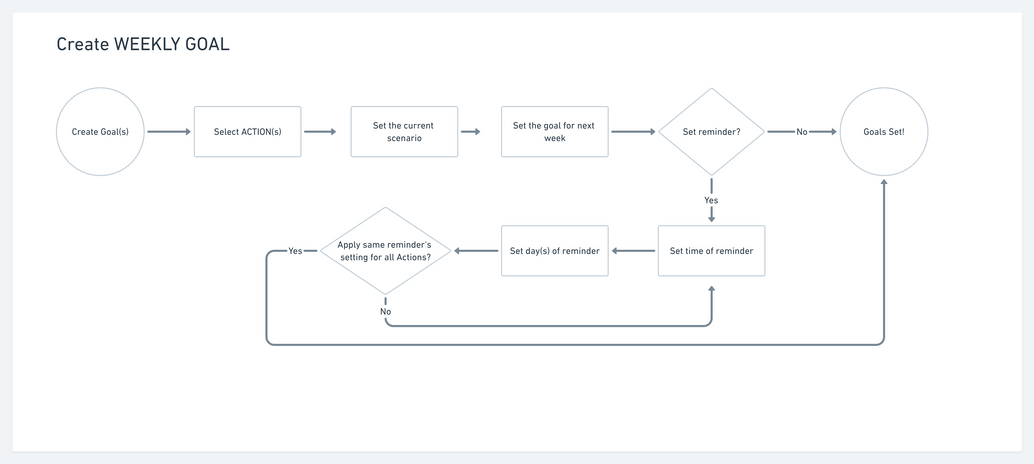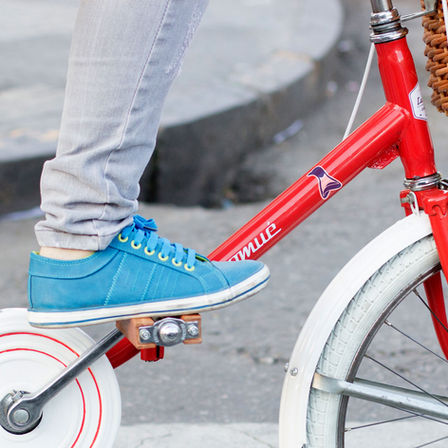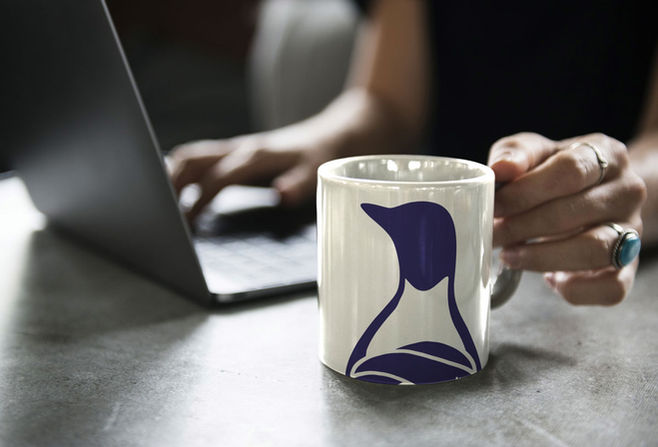
Keep it Cool is an interactive campaign with the goal to raise awareness and to encourage people to make small, incremental, behavior changes to help mitigate the effects of Global Warming.

MY ROLE
I worked on this project alone,
with the guidance of my teacher Kate Rutter, and the always helpful feedback from my colleagues from CCA
PROJECT LENGTH
4 weeks
SKILLS/TOOLS
User Research (Generative Research); Branding (Illustrator); UX; UI (Sketch); Prototyping (Principle)
Motivation
For a while, I’ve been curious about how I, as a designer, could help the environment and contribute to the climate change fight. One of the problems, in my opinion, is that environmentalism is commonly perceived as something boring. So I began to ask myself:
Is it possible to make it cool? To make caring about the environment something mainstream, something that is seen as the obvious way of behaving?

Research
To better understand the way people relate to this topic, I did some research. I started sending a survey to some Facebook groups about Climate Change (including ones with people who deny it’s a real thing) and then conducting a few interviews.
"I'm trying (to
do my part).
Not sure what's anyone's part is"
“I know it’s
important, but
I don’t really
relate to it…”
"I use social media
to alert people and share knowledge."
Audience:
Young people, who are somehow concerned about Climate Change, but don’t know how they can help mitigate its effects.
Findings:
• People are concerned but are not sure what they
can do to help fight Global Warming.
• Being involved with environmentalism is not perceived
as engaging (cool).
How might we invite people to change their mindset and promote small, doable, behavior changes, by making fighting global warming something 'cool'?
To be able to evaluate if my proposed solutions were, in fact, addressing my HMW statement, I came up with 3 design principles.
Design Principles:
• It needs to seem 'cool'
• It needs to be engaging
• It must have the 3 elements of Fogg's Behavior Model converging (motivation, ability, and prompt)
Approach
Here's my approach to the problem:
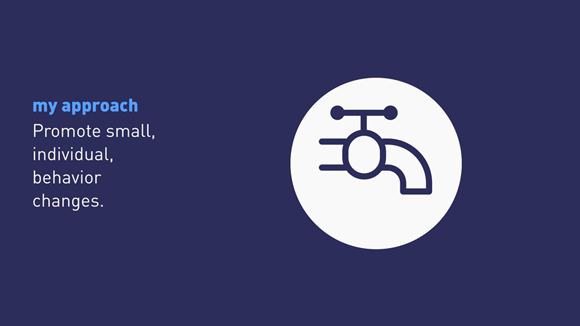

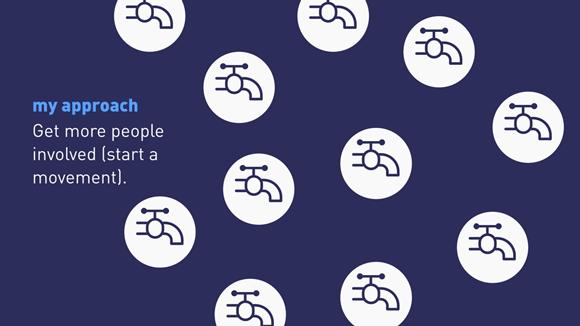
Initial Concept
The primary touchpoint of this project is a mobile app, and the initial concept of it was a complex system, in which users should select actions, set specific details and overall goals for reducing their carbon footprint.
I worked hard in creating the whole system, mapping out the specific features and mechanics for it to work and make sense for every possible user and scenario.

The problem was that when I put a rough prototype in front of people, I realized they were finding it difficult to understand. Although I had created a system that theoretically made perfect sense, it was failing on all 3 design principles. At first, I had hope that I could fix the problems with UI solutions, but then I realized that the user conceptual model of the product was too complex and needed to be simplified. I decided to take a few steps back and rethink its whole system.
Iterated Concept



Instead of offering a lot of options for users to select and add a lot of details and customization, there are 5 actions that users should try to do daily.
By the end of each day, the app invites users to reflect on their behaviors, with simple yes or no questions.
Users earn points for each positive answer.



By the end of each week, users see their final score for the week.
Users can invite friends and compare points.
Users are prompted to invite more friends.

The app
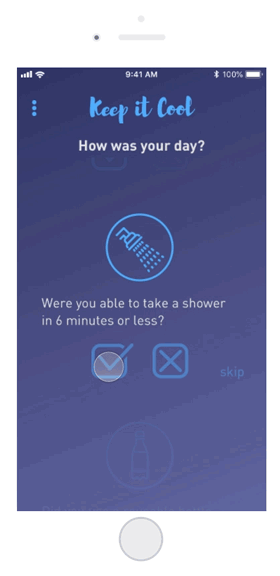
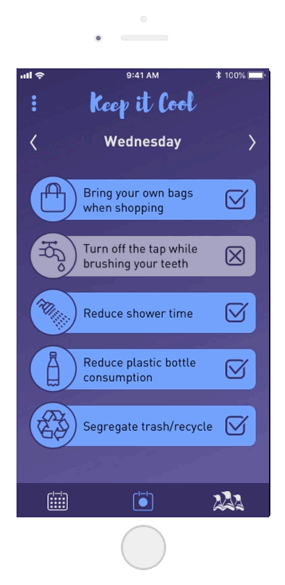
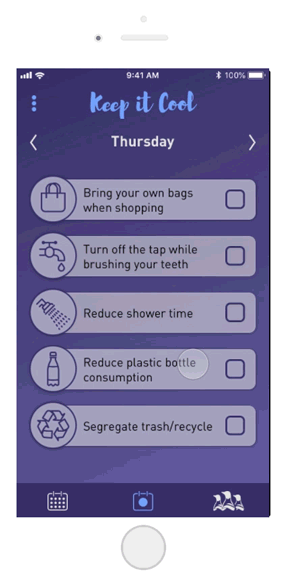
Other touchpoints
This project is not simply an app, but an interactive campaign which has the app as the main touchpoint. In order to really promote change and create a hype, I developed some studies of how the brand could be applied in different situations, to raise awareness and promote a cultural change.
Next Steps
If I were to keep working on this project, the next steps would be to design the experience of "level 2" users - trying to address questions like "What happens when a user starts earning the maximum number of points every week?"; "How can we keep this user engaged with the campaign?"; and "How can we push users to the next level of reflection on their actions?".


